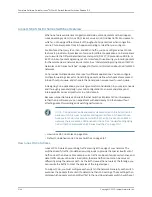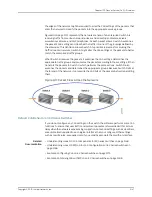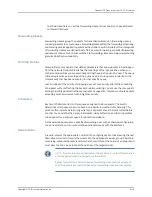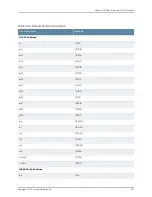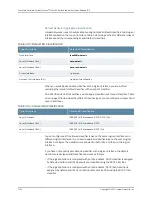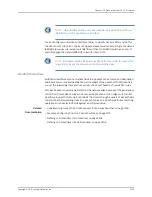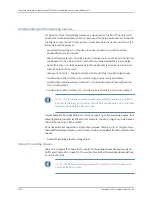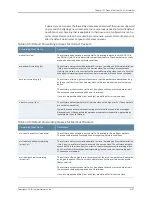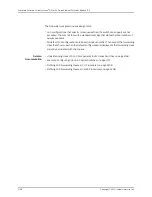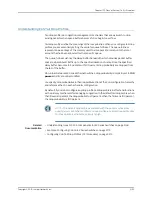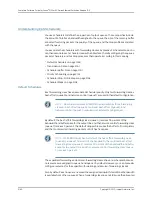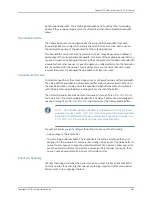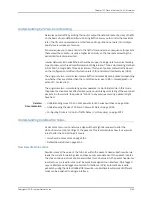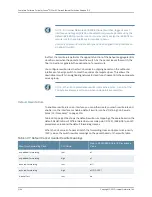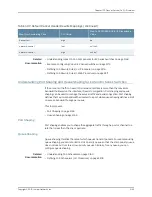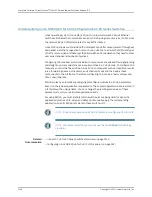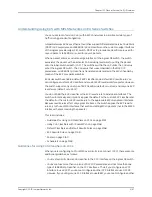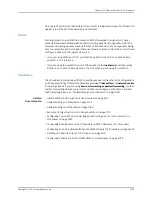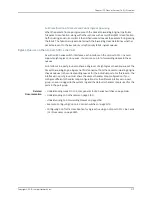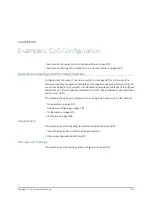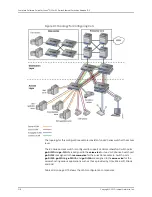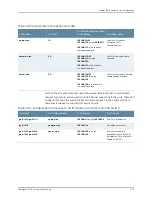
Understanding CoS Schedulers
You use schedulers to define the properties of output queues. These properties include
the amount of interface bandwidth assigned to the queue, the size of the memory buffer
allocated for storing packets, the priority of the queue, and the drop profiles associated
with the queue.
You associate the schedulers with forwarding classes by means of scheduler maps. You
can then associate each scheduler map with an interface, thereby configuring the queues,
packet schedulers, and tail drop processes that operate according to this mapping.
•
Default Schedulers on page 3160
•
Transmission Rate on page 3161
•
Scheduler Buffer Size on page 3161
•
Priority Scheduling on page 3161
•
Scheduler Drop-Profile Maps on page 3162
•
Scheduler Maps on page 3162
Default Schedulers
Each forwarding class has an associated scheduler priority. Only two forwarding classes,
best-effort (queue0) and network-control (queue7) are used in the default configuration.
NOTE:
On Juniper Networks EX8200 Ethernet Switches three forwarding
classes—best-effort (queue0), multicast best-effort (queue2), and
network-control (queue7)—are used in the default configuration.
By default, the best-effort forwarding class (queue 0) receives 95 percent of the
bandwidth and buffer space for the output link, and the network-control forwarding class
(queue 7) receives 5 percent. The default drop profile causes the buffer to fill completely
and then to discard all incoming packets until it has free space.
NOTE:
On EX8200 switches, by default, the best-effort forwarding class
(queue 0) receives 75 percent of the bandwidth, the multicast best-effort
forwarding class (queue 2) receives 20 percent of the bandwidth and buffer
space for the output link, and the network-control forwarding class (queue
7) receives 5 percent.
The expedited-forwarding and assured-forwarding classes have no scheduler because
no resources are assigned to queue 5 and queue 1, by default. However, you can manually
configure resources for the expedited-forwarding and assured-forwarding classes.
Also by default, each queue can exceed the assigned bandwidth if additional bandwidth
is available from other queues. When a forwarding class does not fully use the allocated
Copyright © 2010, Juniper Networks, Inc.
3160
Complete Software Guide for Junos
®
OS for EX Series Ethernet Switches, Release 10.3
Summary of Contents for JUNOS OS 10.3 - SOFTWARE
Page 325: ...CHAPTER 17 Operational Mode Commands for System Setup 229 Copyright 2010 Juniper Networks Inc ...
Page 1323: ...CHAPTER 56 Operational Mode Commands for Interfaces 1227 Copyright 2010 Juniper Networks Inc ...
Page 2841: ...CHAPTER 86 Operational Commands for 802 1X 2745 Copyright 2010 Juniper Networks Inc ...
Page 3367: ...CHAPTER 113 Operational Mode Commands for CoS 3271 Copyright 2010 Juniper Networks Inc ...
Page 3435: ...CHAPTER 120 Operational Mode Commands for PoE 3339 Copyright 2010 Juniper Networks Inc ...
Page 3529: ...CHAPTER 126 Operational Mode Commands for MPLS 3433 Copyright 2010 Juniper Networks Inc ...

